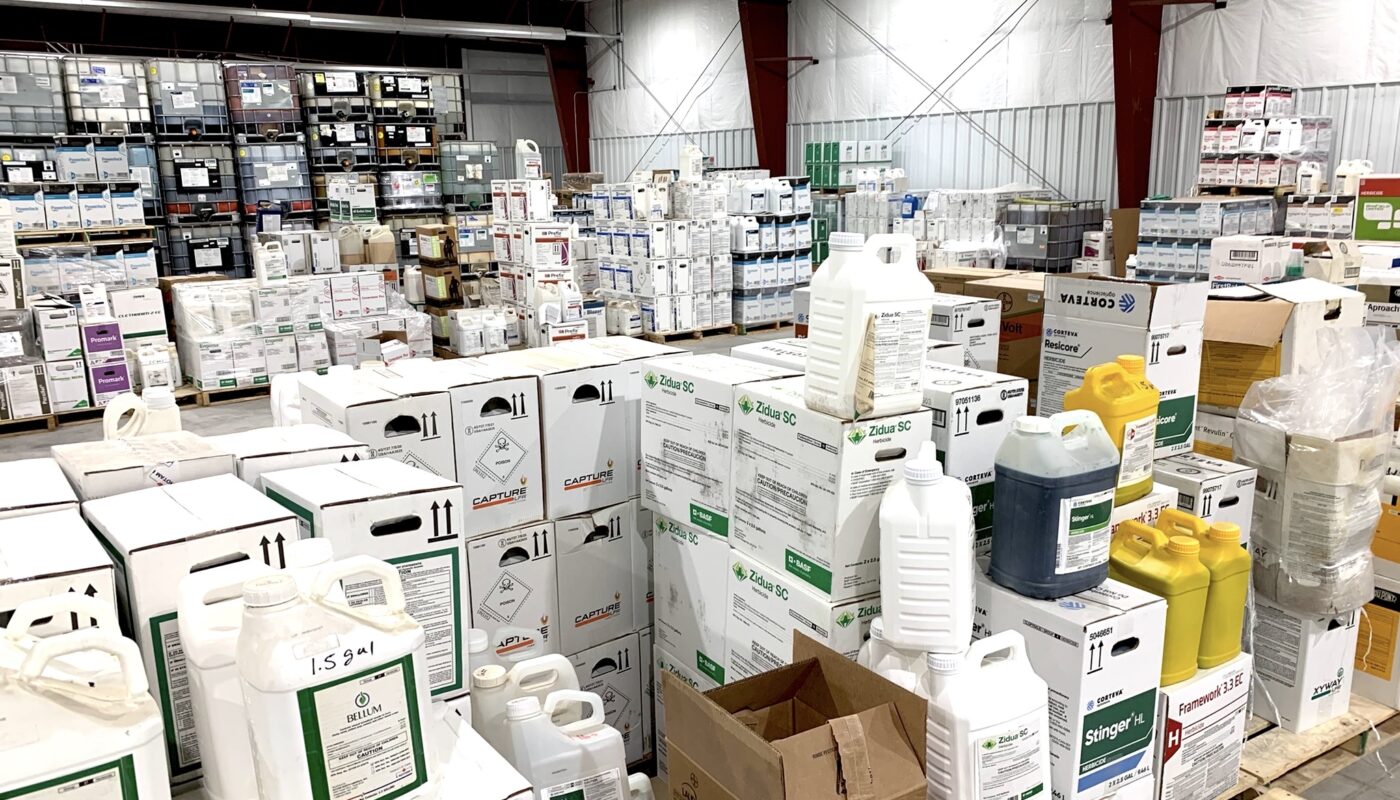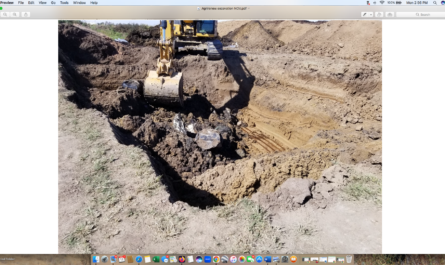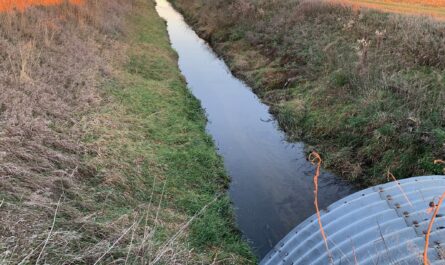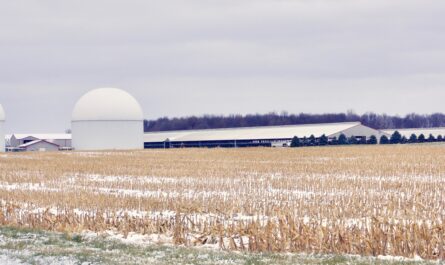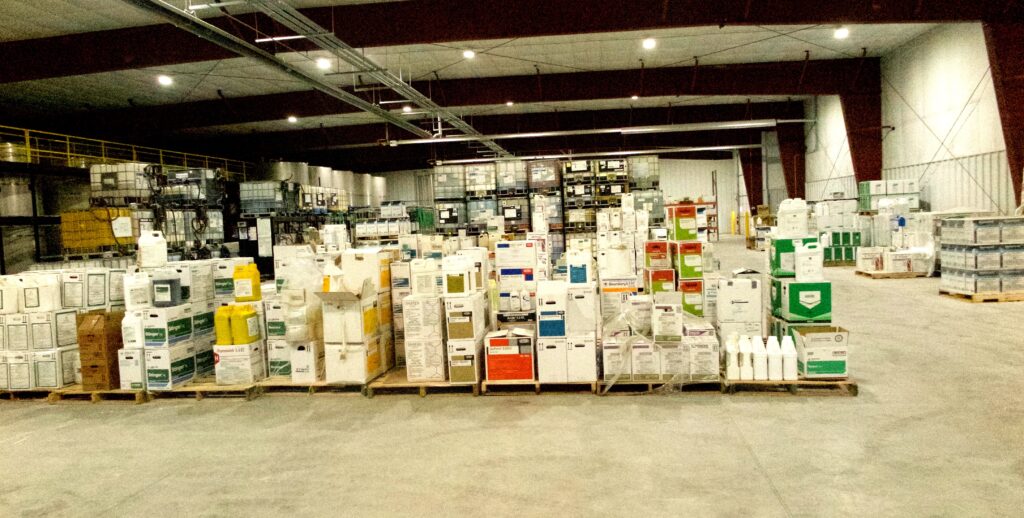
the use of chemicals, saying the inputs are needed to ensure ample food production. A chemical warehouse
at Northern Country Coop in Stacyville, Iowa. (Photo/Keith Schneider)
With one eye fixed on Iowa’s startlingly high cancer rate and the other wary of a political pushback, public health leaders are embracing a novel strategy for preventing malignancies in the nation’s largest farm state.
In a departure from other state cancer prevention programs, which rarely address environmental risk factors for cancer other than radon, a known cause of lung cancer, Iowa is working to better understand and make the case for limiting exposure to environmental pollutants. Chief among them: pesticides, commercial fertilizer, and animal manure from Iowa agriculture.
“These broader array of environmental risk factors are absolutely there for cancer. But they’re not paid attention to in state cancer control plans,” said Molly Jacobs, a nationally prominent epidemiologist at the University of Massachusetts in Lowell, who’s assisting Iowa health authorities. “It’s quite unique that Iowa has addressed this as a priority in their plan. I applaud Iowa for taking on this task of thinking much broader and bigger, and changing this paradigm.”
But in identifying farm chemicals and nutrients as prime environmental factors that need to be addressed, Iowa’s health leaders also know they are stirring the ire of a politically powerful alliance. Farmers, agricultural executives, and state lawmakers have spent decades resisting any changes in farm practices that reduce the use of chemicals and nutrients.
“It doesn’t have to be anything confrontational,” said Kamyar Enshayan, director of the
Center for Energy and Environmental Education at the University of Northern Iowa. “It just needs to be honest. You know, face the reality that something is happening that we don’t fully understand. But knowing what we do know, it’s just prudent that we support practices and systems that require significantly less fertilizer and pesticides.”
The work to address environmental factors to reduce cancer cases began earlier this year and is being undertaken by the Iowa Cancer Consortium. It’s a 21-year-old, 650-member coalition of public health professionals, researchers, and health providers focused on controlling cancer. The consortium is led by Mary Charlton, an epidemiologist at the University of Iowa College of Public Health who also is research director of the Iowa Cancer Registry, which collects cancer data on Iowa citizens.
The consortium has launched an Environmental Task Force and a five-year plan for cutting public exposure to “environmental carcinogens.”
Agriculture Is A Priority
A convergence of powerful trends drive the consortium’s new emphasis on environmental risk factors, and its interest in agriculture as a source.
First, Iowa farmers annually spread more pesticides (nearly 54 million pounds) more commercial fertilizer (2 billion pounds) and more animal manure (50 million tons) than in any other state, according to the U.S. Department of Agriculture and Iowa State University.
Second farm chemicals and nitrate from commercial fertilizer and manure heavily contaminate surface and groundwater across Iowa, according to state monitoring data.
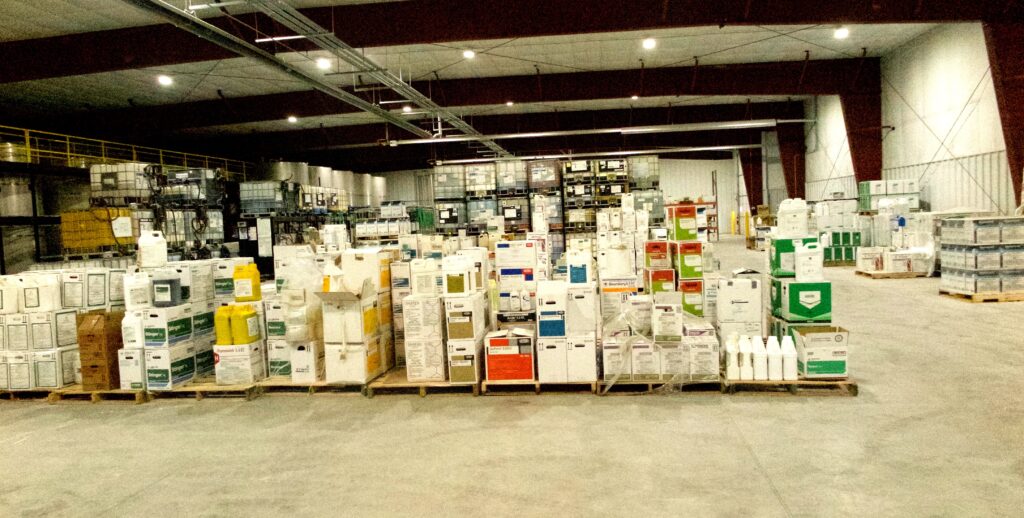
Third, cancer researchers, including a group from the University of Iowa, have linked various cancers to long-term exposure in air and water to trace levels of insecticides, herbicides, and nitrate, among them breast, lymphoma, colon, and brain malignancies. In 2001, researchers at the University of Iowa evaluated data from a long-term study of more than 20,000 women in Iowa and found increased risks of bladder and ovarian cancers associated with elevated nitrate levels in public drinking water supplies used by the women. A 2018 peer-reviewed paper by National Cancer Institute researchers and other scientists evaluated 30 epidemiology studies of low-level exposure to nitrates in public drinking water systems, finding that many studies “observed increased risk with ingestion of water nitrate levels that were below regulatory limits.”
The fourth trend surprised Dr. Charlton and her consortium colleagues earlier this year. Iowa now ranks second to Kentucky in cancer incidence in the United States, and is the only state where the rate of new cancers increased from 2015 to 2019, according to the National Cancer Institute. Rates of oral cancer, leukemia, non-Hodgkins lymphoma, melanoma, kidney, colon, and breast cancer are among the nation’s highest, Charlton told an online consortium meeting earlier this month. Childhood cancers also are increasing. Exposure to nitrate in drinking water is well-recognized by scientists as a risk factor in many of the same high-incidence cancers seen in Iowa – lymphoma, breast cancer, blood, and colon cancer.
What’s more 21,000 new cases of cancer are anticipated to develop this year in Iowa, said Charlton. That’s double the number of new cancers that developed in 1973, when Iowa began keeping records. In the last half-century, though, the state population has increased by 300,000 people, from 2.9 million to 3.2 million, or just over 10 percent.
More Chemicals, More Manure
Iowa investigators want to know what has changed in Iowa to cause such elevated cancer incidence. A likely place to look is the mammoth transformation over the last century in Iowa agriculture.
Since 1973 the number of Iowa crop and livestock farms declined precipitously even as those that survived increased in size and productivity. They also changed cropping patterns. The acres planted in corn increased 30 percent from under 11 million to 14 million, according to the U.S.D.A Yields doubled from under 100 bushels to 200 bushels per acre.
That wouldn’t have been possible without applying millions of pounds of weed-killing herbicides and a tide of commercial fertilizer and nitrogen-rich livestock and poultry manure. In 1973 Iowa corn farmers used an average of 109 pounds of fertilizer per acre. By 2018 they were using 139 pounds on 13 million more acres, according to the most recent USDA data.
Crop researchers have known for decades that as much as 70 percent of the nitrogen in fertilizer and manure is not taken up by crops and drains into ground and surface water as nitrate.

Iowa farmers annually spread more pesticides (nearly 54 million pounds) and more commercial fertilizer (2 billion pounds)
than in any other state. They do with spray equipment like this at Northern Country Coop in Stacyville, Iowa. (Photo/Keith Schneider)
Participants in the Iowa Cancer Consortium are quick to note that identifying environmental factors as sources of human cancer is fraught with all manner of mystery and uncertainty. Genetics appear to play a role. Toxicology, which is the experimental science of exposing laboratory animals to carcinogens and documenting what happens, is different than epidemiology, which is the science of observing health effects of large groups of people. In other words, trying to find causes of cancer in the environment is a big puzzle.
But it’s one that cancer researchers are intent on solving. In 2010 the Obama administration’s President’s Cancer Panel produced a thorough study on reducing environmental cancer risk that specifically identified insecticides, herbicides, and nitrates as a “contaminants from agricultural sources” that merit attention as potential causes of cancer.
More than a decade later the Iowa Cancer Consortium is at the start of a more focused program to make the case that exposure to farm chemicals and nutrients must be reduced in order to solve what’s amounted to a public health emergency. “Some cancers in Iowa are rising and others are not falling a quickly as they are in other states,” said Charlton. “We do know that Iowans have a number of environmental exposures that could contribute to our risk of cancer.”
Enshayan and other participants acknowledge that addressing agriculture practices as a public health threat in Iowa is delicate. When pressed about the hazards of its farm practices, Iowa’s agricultural executives and allied lawmakers strike back. This year alone a prominent researcher who was critical of nutrient pollution was forced out of his post at the University of Iowa. The state Legislature decided not to fund Iowa’s state-of-art system for monitoring nitrate levels in streams. A plan by the state Department of Natural Resources to protect groundwater by requiring better construction and oversight of manure storage lagoons at large livestock operations was dropped in November.
The Cancer Consortium’s work, which is likely to take years, is significant and not just for Iowa. Of the states with the highest cancer incidence, four others in the Corn Belt rank in the top 15, according to the Centers for Disease Control and Prevention.
“The really important thing to consider is cancer is non-partisan and non-political,” said Kelly Wells Sittig, the Iowa Cancer Consortium’s executive director. “It touches everybody.”
“We’re public servants. We have to stay true to the evidence and our work in Iowa,” added Enshayan. “We can’t sit back and say, ‘Wow. Somebody may not like this.’ The evidence is clear that we can do a lot of preventive action that would reduce cancer risks in Iowa. Long-term studies at Iowa State University have shown that we could have a very productive agriculture in Iowa and use 90 percent less synthetic fertilizer and more than 90 percent less pesticides.”
— Keith Schneider
